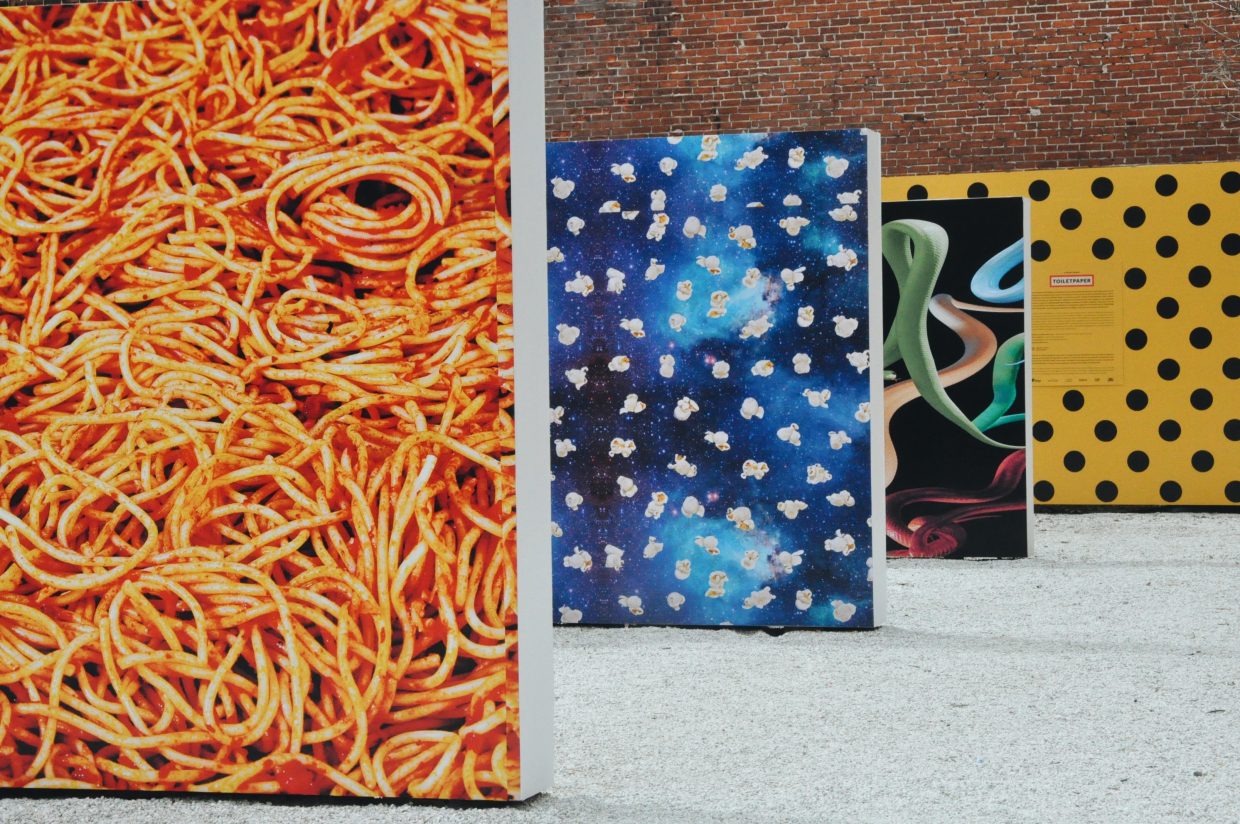Group 3 – Art Scene and Creative Industries
„First of all, we met Peter Parkour – an artist who performs as Spiderman on the street, we met actors and musicians in different places: hotspots for tourists or office workers, neighbourhoods and a few are playing their music in the underground.
We searched for paintings, street art and graffiti. Most of the time we found them also in neighbourhoods, playgrounds, on the ground, hidden and public places near or away from the street. We found big paintings on huge walls – hidden in side streets where you can not see them in their full beauty. That’s why we took panoramas. So we can see what the typical places for graffiti and paintings are.
We wanted to know more about those people which keep the art scene alive: Who are they and why art? And why are they doing their art in the places they have chosen?
Art is made by human – they keep the art scene alive and characterize different forms of art. They are part of the daily life and the lifestyle in a city.
The art scene also belongs to the creative industries. We did some desk research for every city. We walked through the creative districts and got in touch with some workers and self-employed people within the creative industries. We talked to people in the theatre scene, a publisher for comic books, photographers and many other creative workers.
So, Creative Industries are the preamble for companies which offer cultural or creative products, media productions or services in an economically oriented way. They work artistically, literary, cultural, musically and / or architecturally. Every creative or fertile act is included. Because of this definition we collected a huge mix of interviews with many different people with many different jobs. We asked them why they chose this city as a location for their business. For now we can say: Diversity is a huge impact. It offers people a variety of inspiration and is attractive to newcomers. Everyone belongs automatically to the community and this is interesting for creatives: They can create a network with all the other creative people which are working in the same city.“
Group 4 – Musealization and Consumer Culture
„Consumer culture contributes to the urban redevelopment of cities. Offering a variety of shopping opportunities are highly relevant for a city. They encourage consumption among locals and tourists and introduces new forms of cultural participation. In order to capitalize on the driving force of consumer culture, it is important to gain knowledge about the infrastructure and climate of consumer culture within a city. Attention should also be directed towards social preferences between major brand name stores over niche, independent shops.
At the outset of the project, it was evident that desk research could not capture the entire picture. To gain further knowledge about consumer culture, we decided to employ methods, such as interviews and social observation. Through these methods, we aimed to identify and understand consumption patterns and consumerist attitudes. This objective also drove us to create a questionnaire, which helped maintain consistency in the interviews conducted with people on the street. We asked locals, tourists, and shop owners in shopping districts and malls about their shopping culture along with soliciting their preference of chain stores over independent (little, unique) stores and about the overall topic of creativity in a city. We found out that Toronto offers a diverse range of brands in central downtown, but also niche boutiques/vintage stores in smaller, eclectic neighbourhoods like Kensington Market. Montreal displayed an equal presence of niche stores and chain stores. We saw a mix of North American chains with typical shops selling unique products in areas like “Plateau” or “Avenue du Mont-royal”. In Heidelberg, the main shopping street called “Hauptstraße” has a large presence of large brand name, chain stores. The side streets are where the affordable local stores and boutiques can be found. Mannheim has a diverse range of chain stores to offer and a wide range of upper class brands and boutiques, but not so many niche stores (in downtown).
Activities and events associated with high culture have become more fluid– entering more inclusive and accessible spaces to attract diverse audiences. High culture becomes a driving force in the growth and development of a creative city. The cities we visited demonstrated varying degrees of exclusivity when it came to high culture. While Toronto and Heidelberg reflected a medium degree of inclusiveness for high culture with some events open to the public, Montréal peaked in terms of open and inclusive high culture. Montreal had a booming music and arts scene accompanied by diverse festivals like the famous jazz festival or the “Place des Arts” where it is free or charged at a lower cost for the public to attend. This was reflected in a local’s perspective of the city: “It is fun to be poor in Montréal”. Mannheim instead showed a low degree of inclusiveness for high culture compared to the other cities. High culture events mainly take place in traditional spaces, such as theatres, and are not normally free. However, individual artists do still open their concerts and exhibitions for the public.
Museums in all four cities offer various interest areas regarding history, arts, music etc. Of course, Toronto and Montréal own more museums than Heidelberg and Mannheim due to their size. Each museum is special for the city which indicates the ongoing musealization as a sign of a creative city.“
